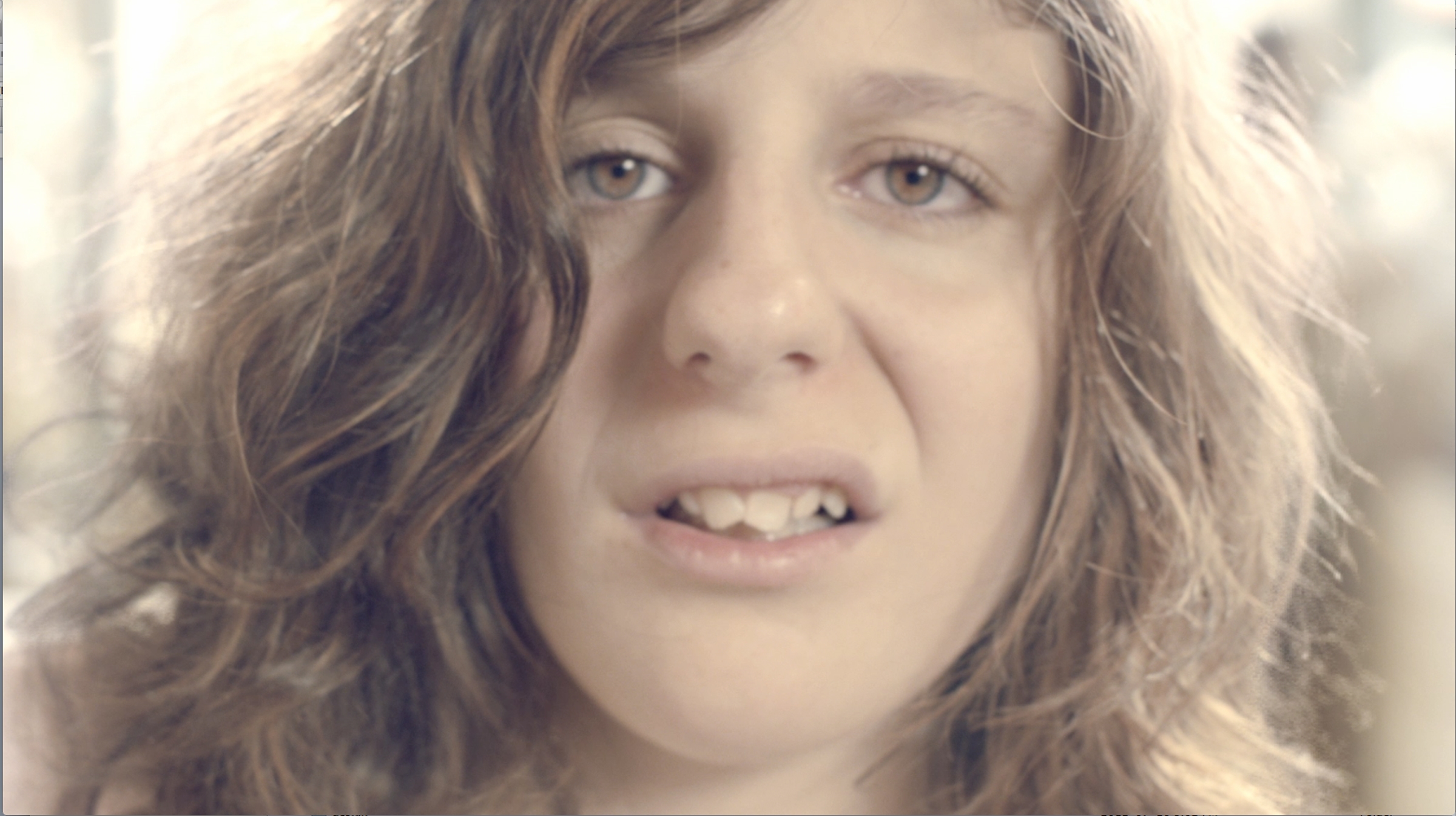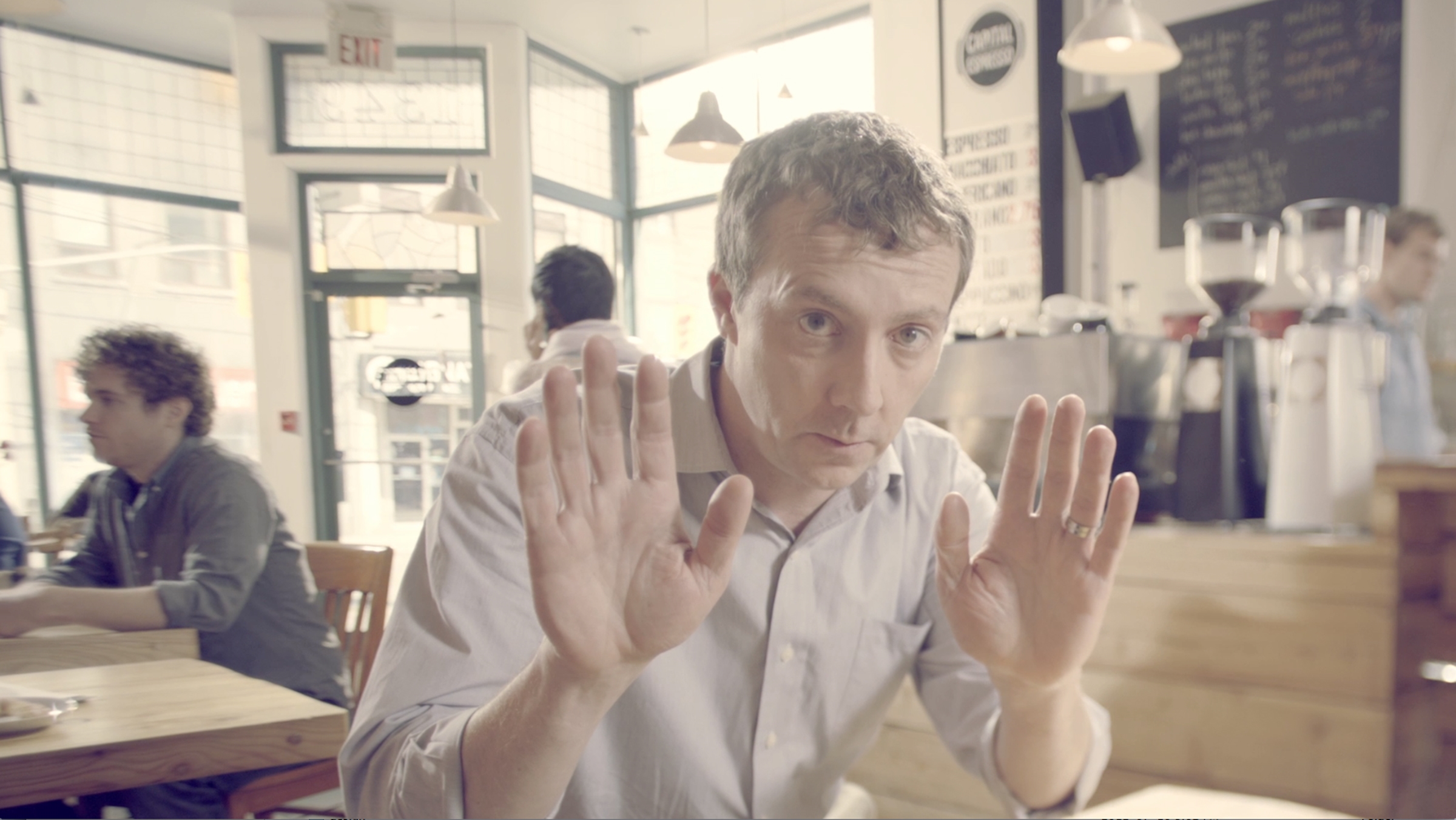Carly’s Cafe
Not-for-Profit (SILVER)
Client Credits: Carly Fleischmann
Carly Fleischmann
Arthur Fleischmann
Agency Credits: john st.
Angus Tucker – Executive Creative Director
Stephen Jurisic – Executive Creative Director
Marie Richer – Art Director
Kelly Uman – Copywriter
Ryan O’Hagan, Cas Binnington – Producers
Marc Cattapan – Technologist
Heung Lee – Ransom Profit
Miles Jay – Director
Harland Weiss – Executive Producer
Donovan Boden – Executive Producer
Dennis Beier -Line Producer
Chris Mably – DOP
Chris Murphy – Editor – Relish
Sean Cochrane – VFX Artist – The Vanity
Pirate Toronto – Music House
Section I — BASIC INFORMATION
| Business Results Period (Consecutive Months): | June 1 2012 – May 31, 2013 |
| Start of Advertising/Communication Effort: | June 1, 2012 |
| Base Period as a Benchmark: | New effort = benchmark is from start date. |
Section II — SITUATION ANALYSIS
a) Overall Assessment
Every year, 1 in 80 kids are diagnosed with autism spectrum disorder (ASD). Few of us understand this mysterious condition because many people with autism are unable to share their thoughts and feelings. They live locked in – often misunderstood and sometimes, mistreated.
Carly Fleischmann was diagnosed at the age of 2 with severe autism. She was also thought to be cognitively impaired. Until she turned 10 and began independently typing on her computer, that is. Then her thoughts, insights and observations began pouring out with a wit, intelligence and passion that would become her trademark voice.
She went on to become a passionate advocate for those with ASD, often appearing on television (ABC 20/20, CNN, CTV, The Doctors, Ellen DeGeneres). Today, she has over 100,000 Facebook fans who follow her religiously and a total global reach of nearly 4 million.
Carly’s Cafe was an experiential website created to promote Carly’s cause and to support the launch of a book she co-authored called Carly’s Voice.
In 2012, there were a number of books, articles and videos floating around the internet on the topic of ASD, some written by or about those on the less-severe end of the spectrum living with what’s called Asperger’s Syndrome (“Look Me in the Eye: My Life with Asperger’s”; “Born on a Blue Day”, and Jason McElwain the high school student who scored a game winning in regional basketball playoffs. [Footnote #1] While these stories are moving, none of them gave a personal account of someone living with a very severe form of non-verbal autism.
As a young woman who had not been able to communicate a single thought for a decade, Carly had a lot to say once she found her voice. And top of her list, was her desire to share with the world a personal account of what it was like to live with autism. Not just in the written word – which was a precious medium for her – but in a manner that people could experience and therefore be moved by. In fact, Carly and the team at john st. believed that Carly’s Café, if sufficiently immersive, would increase empathy and intrigue readers, acting as a “sampling program” for the book, Carly’s Voice. That it would also drive followers to Carly’s Facebook and twitter feeds and thereby increase her ability to reach a broader audience with her advocacy efforts would be bonus.
Getting attention in the heavily marketed not-for-profit (NFP), charity and altruism arena is challenging, even with a significant marketing budget. Imagine trying to get hundreds of thousands of people to pay attention when you have no voice. And no marketing budget. That’s right. Zero dollars.
b) Resulting Business Objectives
Overall, the goal was to increase awareness of ASD and empathy for those living with it and drive interest in the book, Carly’s Voice: Breaking Through Autism.
Specifically, we would measure success by looking at the number of hits to the interactive site and views of the non-interactive video version of Carly’s Café. From john st.’s related not-for-profit experience, we felt that +150,000 hits to the site and 200,000 YouTube views for an unsupported, unseeded initiative was a healthy goal.
Further measures would include: increase in Carly’s public fan page on Facebook during the same time period the site was active; increased engagement (Facebook ‘talking about’ scores) and click through to the Carly’s Voice landing page. While difficult to make a direct link (due to multiple purchase channels) we would also look at sales of the book. A goal of 20,000 unit sales in first 12 months would be considered excellent for an unknown author. [Footnote #2]
Finally, although not measurable with our tools, we would look for any earned media our efforts generated as they would further help the cause of sharing Carly’s message.
c) Annual Media Budget
$100,000 – $200,000
d) Geographic Area
Canada, with global spill.
Footnote 1: http://www.youtube.com/watch?v=cZtU676jA_k
Footnote 2: Source Simon & Schuster, NY
Section III — STRATEGIC THINKING
a) Analysis and Insight
To perceive is to suffer.
Aristotle
It’s much harder to relate to things that we ourselves cannot feel. The problem with non-verbal, severe autism is that it’s so foreign to most of us that it’s hard to empathize with. Imagine a scent being so strong that you cannot hear. Or a sound being so loud you cannot see. Or the rough touch of a sleeved arm brushing past that it makes you lose your concentration. Imagine that is your reality every minute of every day. And imagine you have no voice to speak out. For most of us, we cannot fathom this being our day-to-day existence.
This has been Carly’s life as long as she can remember. Yet the person inside belies this debilitating condition. Sadly, she is often judged by her odd behavior or outbursts. Her message is to see people with autism for what’s inside; listen patiently and ignore the book’s cover.
Carly has a very high intelligence (over 120 IQ as best it can be measured), a dry wit and a charitable disposition that has driven her to initiate and manage a number of major charitable events. One of her main goals is to share with the world “the truths and myths of autism” as she says. In doing so, she hopes to help the millions of kids living with autism but not receiving the support and attention they need to thrive. She felt that to truly understand the condition, people must experience it. Too often these kids are evaluated by the wrong yardstick, because of what people see on the outside. As she once posted on Facebook, “Let’s stop expecting fish to climb trees and let’s see how fast and hard they can swim.”
In a chapter of the book she co-authored with her father, Carly uses a powerful metaphor of sitting in a coffee shop and trying to enjoy a coffee with a friend while the ambient sounds, the powerful scents and the chaos of the environment distracts, distorts and invades all aspects of her senses. We felt that we could use digital technology to help people experience this firsthand, and in doing so raise empathy and build Carly’s fan base and book sales. All in the service of spreading Carly’s message. Done correctly, we would have done something that no one had ever done before: allow us neurotypicals inside the world of ASD.
b) Communication Strategy
In many ways, Carly’s Café competes with any type of awareness building effort for an illness or condition – far too many to measure. More specifically in the world of autism, related “competitors” would include Autism Speaks, Geneva Center and a host of grass roots charities raising funding for those living with autism and autism research.
In most cases, these organizations are either running an event to raise money, or distributing information for families living with ASD. Again, there are too many of these causes to measure or track.
There are literally millions of books about autism (a Google search brings up 67.7 million hits) making this an enormously cluttered market. Our effort had to stand above this chaos.
Our strategy was to create an immersive online experience would set us apart from all of the above and drive interest in Carly and her book, Carly’s Voice. The uniqueness of the interactivity we felt, would be intriguing, encourage involvement (as measured by time spent on the site) and resonate with the target population: a broad swath of adults who are curious about autism either because it effects a family member or friend, or because they have a professional interest.
Section IV — KEY EXECUTIONAL ELEMENTS
a)Media Used
An interactive version of Carly’s Café and non-interactive video was posted on YouTube – both without paid seeding. No paid media was used. Carly and her friends tweeted and posted the links on their Facebook pages but this effort was truly of grass roots, social media effort.
b)Creative Discussion
Although non-verbal, Carly’s written voice was very powerful. Prior to the launch of Carly’s Café, she already had 40-50 thousand followers on Facebook and another 19 thousand on Twitter. But to reach beyond her current, loyal fan base, we needed to come up with something emotionally gripping, engaging to watch and aesthetically stunning. The powerful metaphor of a conversation between Carly, a non-verbal autistic teen and a neurotypical friend in a busy coffee shop was a great brief to start from.
Most of us take for granted that when we open our mouth, words will come out. That we can ask for what we want and get it. That we can sit in a noisy environment and filter out the sounds to have a conversation. But for Carly and the millions of people living with autism around the world, this is just a dream. Their senses betray them – scent clouds vision, visual distraction blocks verbal comprehension, touch can cause such physical pain that the body feels like it’s exploding.
Now, how could we get this powerful experience across in a two dimensional medium?
The coffee shop was the perfect environment to bring Carly’s experience to life – a seemingly normal, pleasant place to relax with a friend becomes overwhelming to an autistic person.
The idea behind the interactive site was simple: we would initially give users the ability to control their exploration of the site. But then, we would slowly begin to take away that control (by having the mouse not respond to the user’s wishes) – mimicking the loss of control that Carly experiences. The loss of control is gradual but ends in a chaos of disturbing sounds and distraction.
The video was shot creating 5 unique zones, seamlessly integrated into a 7-minute experience. Shot from Carly’s perspective, we literally feel what it’s like to try to communicate our wants and engage in a conversation in a world of constant chaos.
Carly once told her parents that she wished they could feel what it’s like to be in her body. With Carly’s Cafe, we all can.



c)Media Discussion
As previously mentioned, no paid media, search or seeding was used. However, using the power of owned and earned media, ie. a well-managed social community, we got the word out. The creative and production community posted Carly’s Café on their sites and blogs. Carly posted it on her Facebook page. And as media and people took notice, the word spread.
Section V — BUSINESS RESULTS
a) Sales/Share Results
Carly’s Café was a tremendous success based on every measure we set for it:
– During the 12 months following the launch, carlyscafe.com received 199,132 hits (177M unique visitors) with an average viewing time of seven minutes. Given the limited amount of content (one video experience), this duration is outstanding. Many commercial sites are fortunate to retain viewers more than 2-3 minutes. [Footnote 3]
– 17% of viewers of Carly’s Café clicked through to www.carlysvoice.com, a site which hosted a landing page promoting the book and driving viewers to e-commerce portals. In john st.’s experience with similar initiatives for World Wildlife Fund, Rethink Breast Cancer and Warchild, 8-10% appears to be an average click through rate from a “viral video” to website. [Footnote 4]
– The non-interactive version, posted on YouTube received 370,000 views. Viewers logged in from all over the world including the US, Brazil, UK, Australia, France, Germany and Belgium. [Footnote 5]
– Carly’s public Facebook follower-based grew from just under 50M in the Spring of 2012 to over 100,000 in April 2013, with an astonishing 30% engagement (‘talking about’) score.
– Year-one book sales of Carly’s Voice topped 30,000 and the book made the Best Seller List (Globe & Mail) for two weeks straight the month after Carly’s Café broke. [Footnote 6]
– Further, Carly’s Café was used by the President of Poland in his opening remarks to the UN Counsel on Persons with Disabilities in February 2013.
Carly’s Café also won a Silver Lion at the 2013 Cannes Festival in the Cyber category. While an award may not typically be considered a business metric for a CASSIE, given that our goal was increased recognition on a global scale, a Lion at Cannes is highly meaningful. Carly’s Café was selected from over 3200 entries from around the world and was one of only 9 medals Canada received in 2013.
b) Consumption/ Usage Results
c) Other Pertinent Results
d) Return on Investment
Footnote 3: Google Analytics
Footnote 4: Google Analytics
Footnote 5: Youtube audience measurement
Footnote 6: Simon & Schuster, NY
Section VI — CAUSE & EFFECT BETWEEN ADVERTISING AND RESULTS
a)General Discussion
It is evident that the power of a big idea, powerfully executed can create dramatic impact. The most direct linkage is the click-through rate of 17% (indexing at 180-190 vs. john st.’s average for similar type NFP/charitable initiatives), the strong book sales (best sellers’ list) and the growth in engaged fans participating in Carly’s community. No other marketing efforts were executed making this a perfectly controlled scientific experiment.
b)Excluding Other Factors
Spending Levels:
Our investment was $0 (OPC Productions donated the production of the interactive site). Most charities (Autism Speaks Walk, Geneva Center, and other non-autism charities) invest in sporadic out of home, PSA’s or radio advertising.
The NFP/charitable segment is challenging to measure, however, larger charities may have significant dollars behind them – all competing for people’s altruistic attention.
Pricing:
N/A
Book price was set by retailers and not influenced by Carly’s Café.
Distribution Changes:
N/A
Distribution is not a factor either in the viewership of Carly’s Café or the purchase of the book. All books are available online and competitive data on online/offline sales splits are not available.
Unusual Promotional Activity:
None.
Other Potential Causes:
Other PR and social media could have resulted in increased activity either driving book purchase or fan engagement, however, as Carly’s social media activity was actually LOWER in spring/summer 2012 due to school and vacation, these causes can be dismissed.